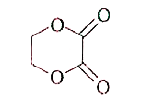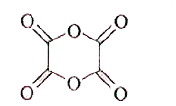When methyl alcohol is heated to 140∘C with conc. H2SO4, the product formed is :
Ethyl sulphate
Dimethyl ether
Ethane
Ethanoyl sulphate
The correct Answer is:B
To solve the question, we need to understand the reaction that occurs when methyl alcohol (methanol, CH₃OH) is heated with concentrated sulfuric acid (H₂SO₄) at 140°C. Here’s a step-by-step breakdown of the process:
Step 1: Understand the Reactants
- We start with methyl alcohol (methanol), which has the chemical formula CH₃OH.
- We are also using concentrated sulfuric acid (H₂SO₄) as a catalyst.
Step 2: Protonation of Methyl Alcohol
- When methanol is heated with concentrated H₂SO₄, the alcohol gets protonated.
- The oxygen atom in methanol has lone pairs and can accept a proton (H⁺) from sulfuric acid.
- This leads to the formation of an oxonium ion (CH₃OH₂⁺), where the oxygen carries a positive charge.
Step 3: Nucleophilic Attack
- Another molecule of methanol (CH₃OH) can now act as a nucleophile.
- The lone pair of electrons on the oxygen of the second methanol molecule attacks the positively charged oxonium ion.
- This results in the formation of a bond between the two methanol molecules.
Step 4: Elimination of Water
- During this reaction, a water molecule (H₂O) is eliminated.
- The reaction results in the formation of dimethyl ether (CH₃OCH₃).
Step 5: Conclusion
- Therefore, when methyl alcohol is heated to 140°C with concentrated H₂SO₄, the product formed is dimethyl ether (CH₃OCH₃).
Final Answer
The product formed is dimethyl ether.
---
- We start with methyl alcohol (methanol), which has the chemical formula CH₃OH.
- We are also using concentrated sulfuric acid (H₂SO₄) as a catalyst.
- When methanol is heated with concentrated H₂SO₄, the alcohol gets protonated.
- The oxygen atom in methanol has lone pairs and can accept a proton (H⁺) from sulfuric acid.
- This leads to the formation of an oxonium ion (CH₃OH₂⁺), where the oxygen carries a positive charge.
- Another molecule of methanol (CH₃OH) can now act as a nucleophile.
- The lone pair of electrons on the oxygen of the second methanol molecule attacks the positively charged oxonium ion.
- This results in the formation of a bond between the two methanol molecules.
- During this reaction, a water molecule (H₂O) is eliminated.
- The reaction results in the formation of dimethyl ether (CH₃OCH₃).
- Therefore, when methyl alcohol is heated to 140°C with concentrated H₂SO₄, the product formed is dimethyl ether (CH₃OCH₃).
The product formed is dimethyl ether.
Similar Questions
Knowledge Check
When ethyl hydrogensulphate is heated at 140∘C with excess of alcohol, the product formed is
AethaneBethyleneCdiethyl etherDdiethyl sulfateWhen ethylene glycol is heated with oxalic acid in the presence of conc. H2SO4, the product formed is :
A B
B C
C D
D
If sucrose is treated with conc. H2SO4, the product formed is
View SolutionWhen NH3 reacts with conc. H2SO4 products formed is/are:
View SolutionWhen ethanol is heated with conc. H2SO4 at 140∘C (431K), the product obtained is:
View SolutionWhen ethanol is heated with conc. H2SO4 at 140∘C (431K), the product obtained is:
View SolutionWhen KNO3 reacts with conc. H2SO4 products formed is/are:
View SolutionEther is formed when Ethyl alcohol is heated with conc. H2SO4The conditions are
View Solution
